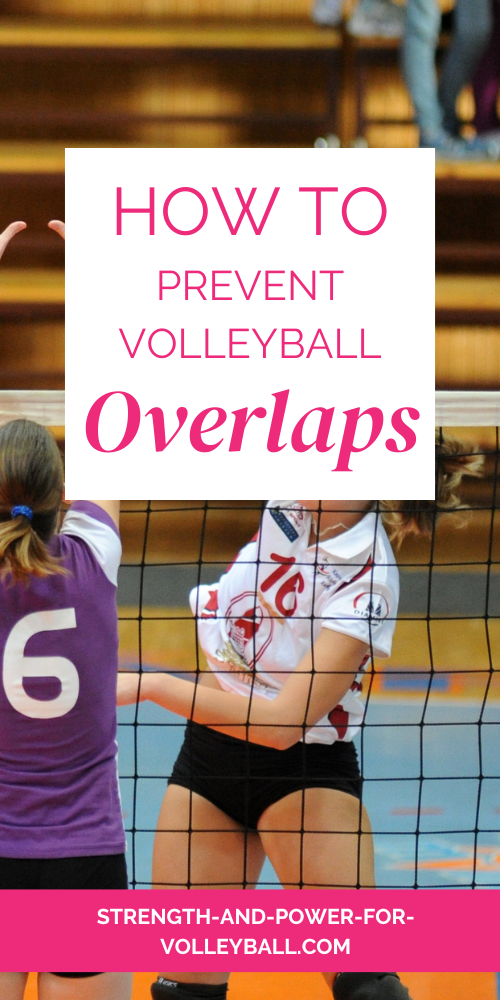Volleyball Overlapping Rules
How to Prevent Out of Alignment Calls
The volleyball overlapping rules are important to know for competitive volleyball players. The better you understand the volleyball rules, the better you will be at preventing your team from being called for illegal volleyball overlaps.
Understand When You Can and Can't Overlap
Once you understand the rules for overlapping, it will be easy for you to prevent being called out of rotation. Watch my latest video on volleyball overlapping rules and you will soon be comfortable with your volleyball alignments.
There are 3 key steps to understanding overlaps.
- Know Your Opposite
- Know what player you follow and what player follows you in each rotation
- Know what rotations it's illegal to overlap these players
When it comes to overlaps, there is one more important point. You need to be concerned about where your feet are (and your teammates feet are) in relation to the centerline and sideline.
How to Rotate in Volleyball
Before discussing further about volleyball overlapping rules, let's go over rotating in volleyball.
When the receiving team wins the rally, the team rotates one position clockwise.
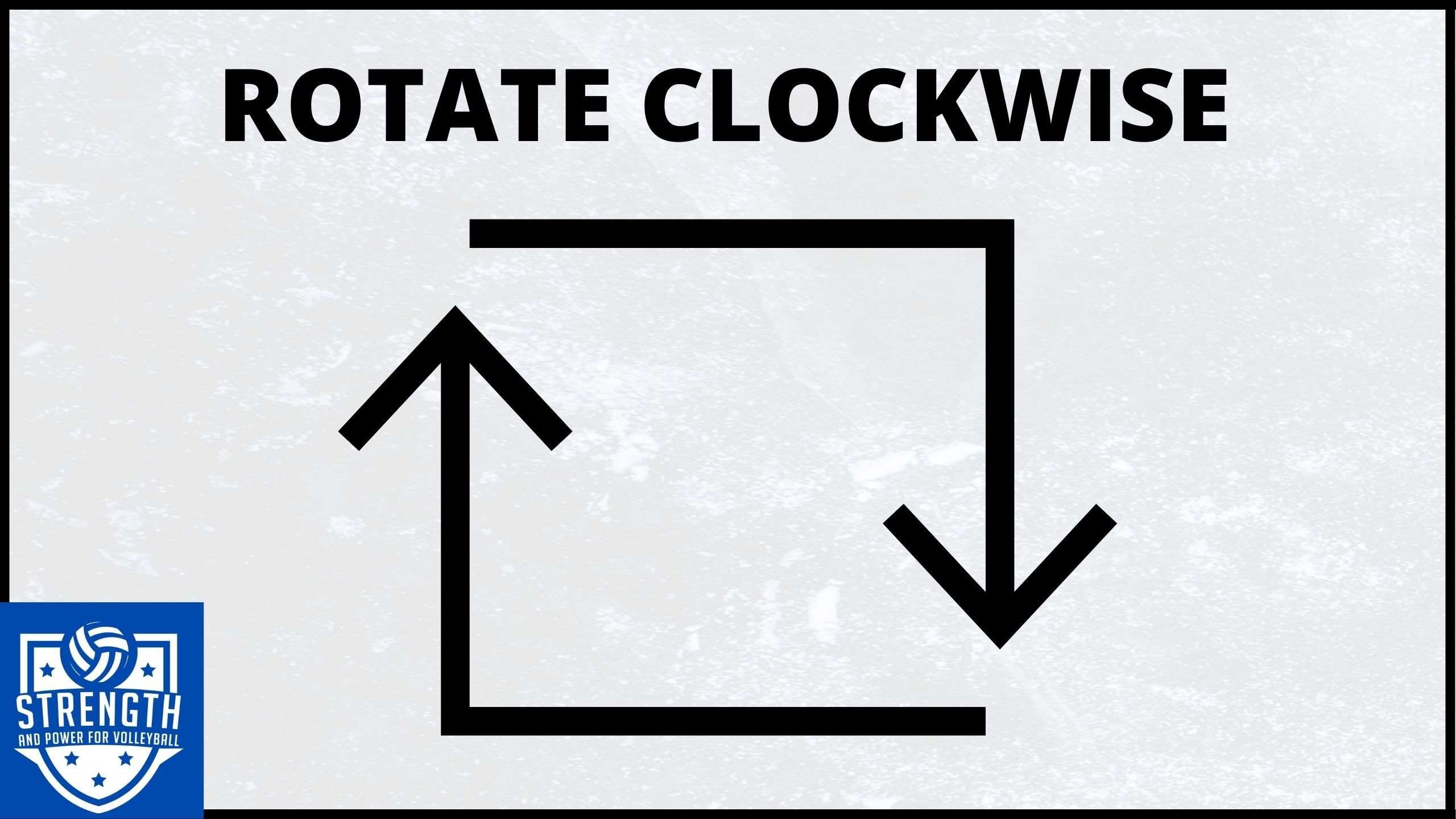
Player in zone 1 rotates to zone 6. Player in zone 6 rotates to zone 5 and so on.
The player that is now in zone 1 serves. This player will continue to serve until the opponent wins a rally.
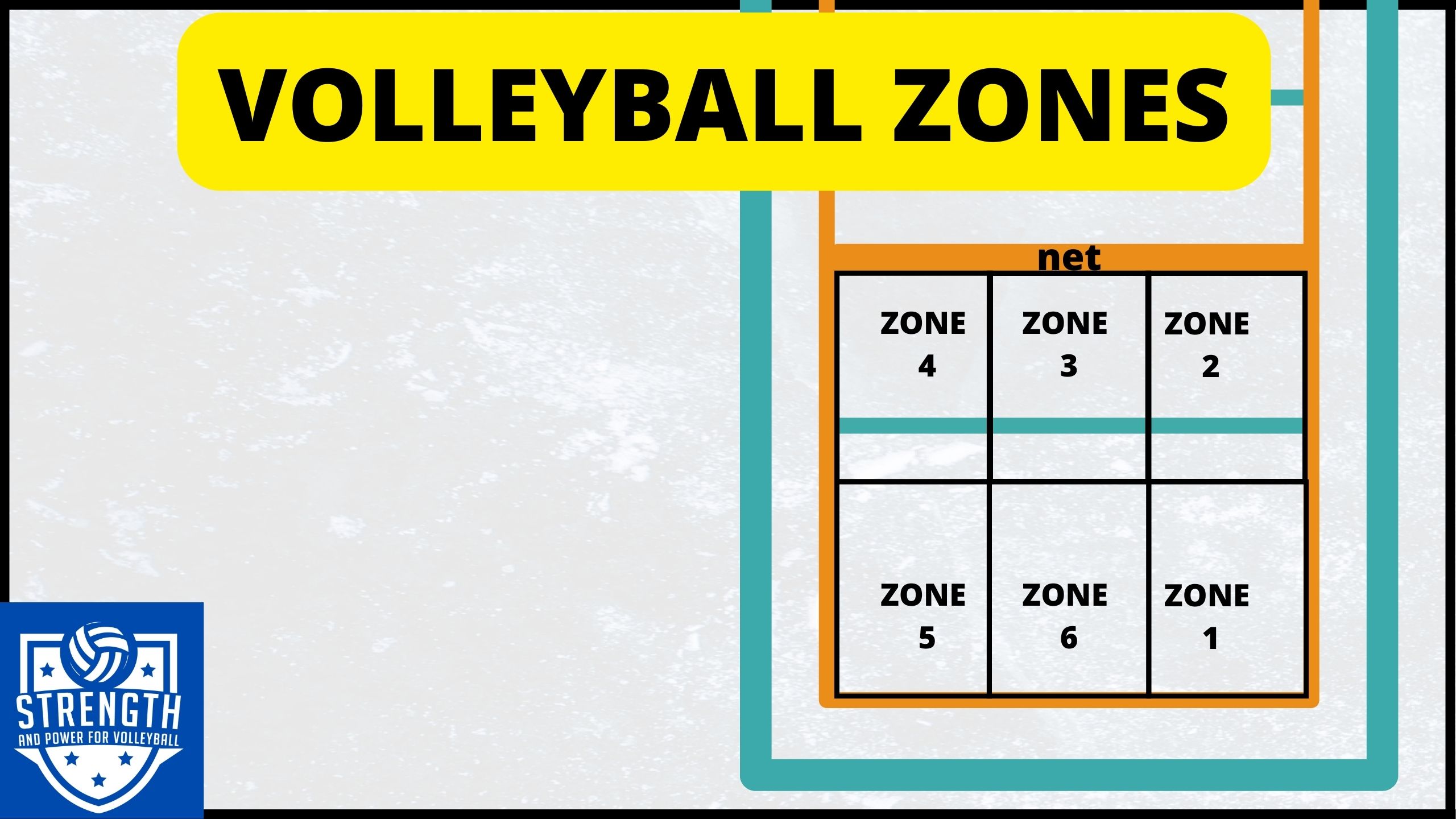
Positions and Zones on the Court
There are 6 zones on the court. These are also called positions. Zone 1 is RB. Zone 6 is MB. Zone 5 is LB. Zone 4 is LF. Zone 3 is MF. Zone 2 is LF.
In order to understand volleyball overlapping rules, you need to know what zone you are in.
For example, if you are the player in the RB position (zone 1) you need to be concerned about where you are in relation to the MB and RF.
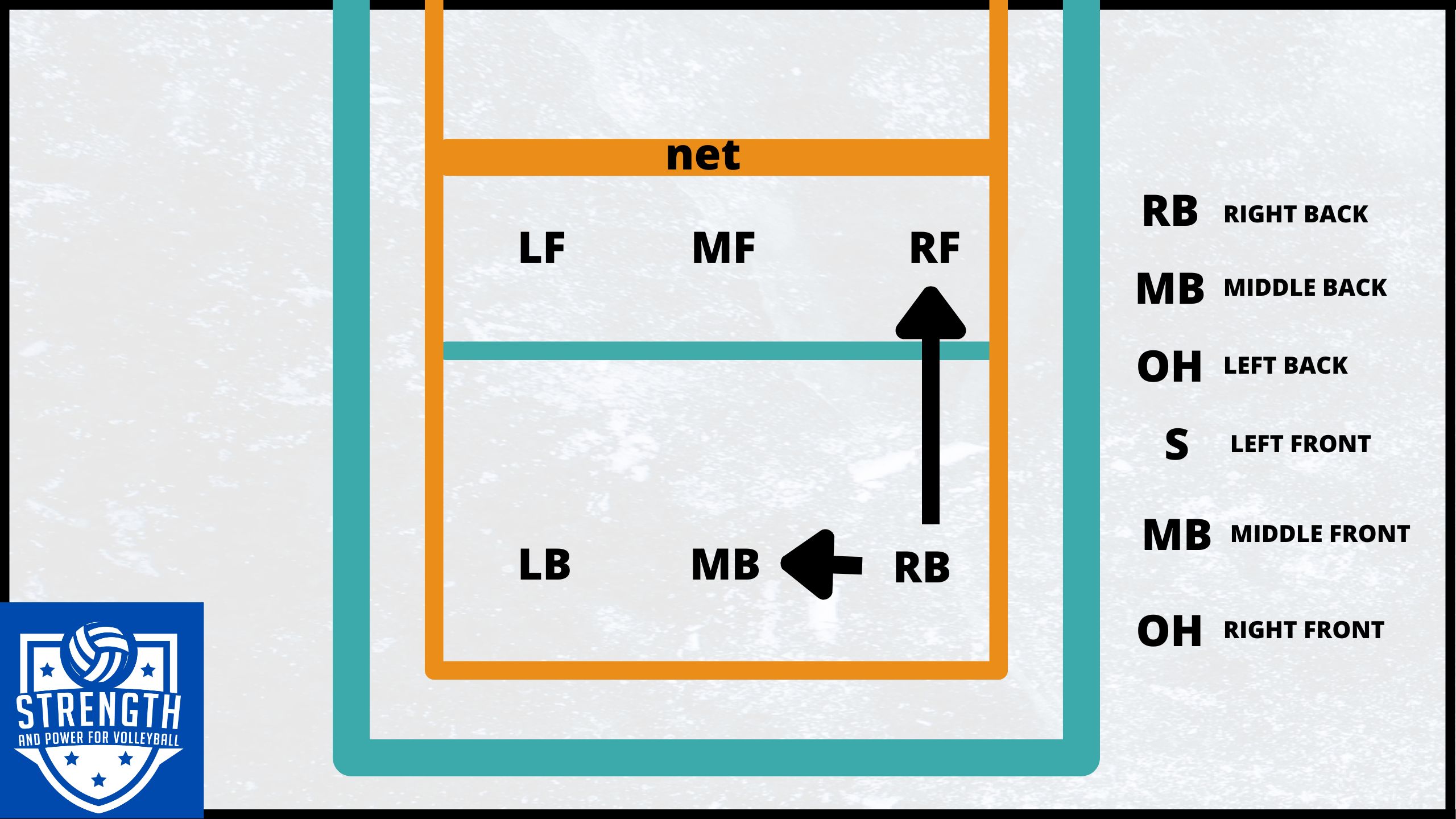
For the MB player (zone 6), you need to be concerned about LB, MF, and RB.
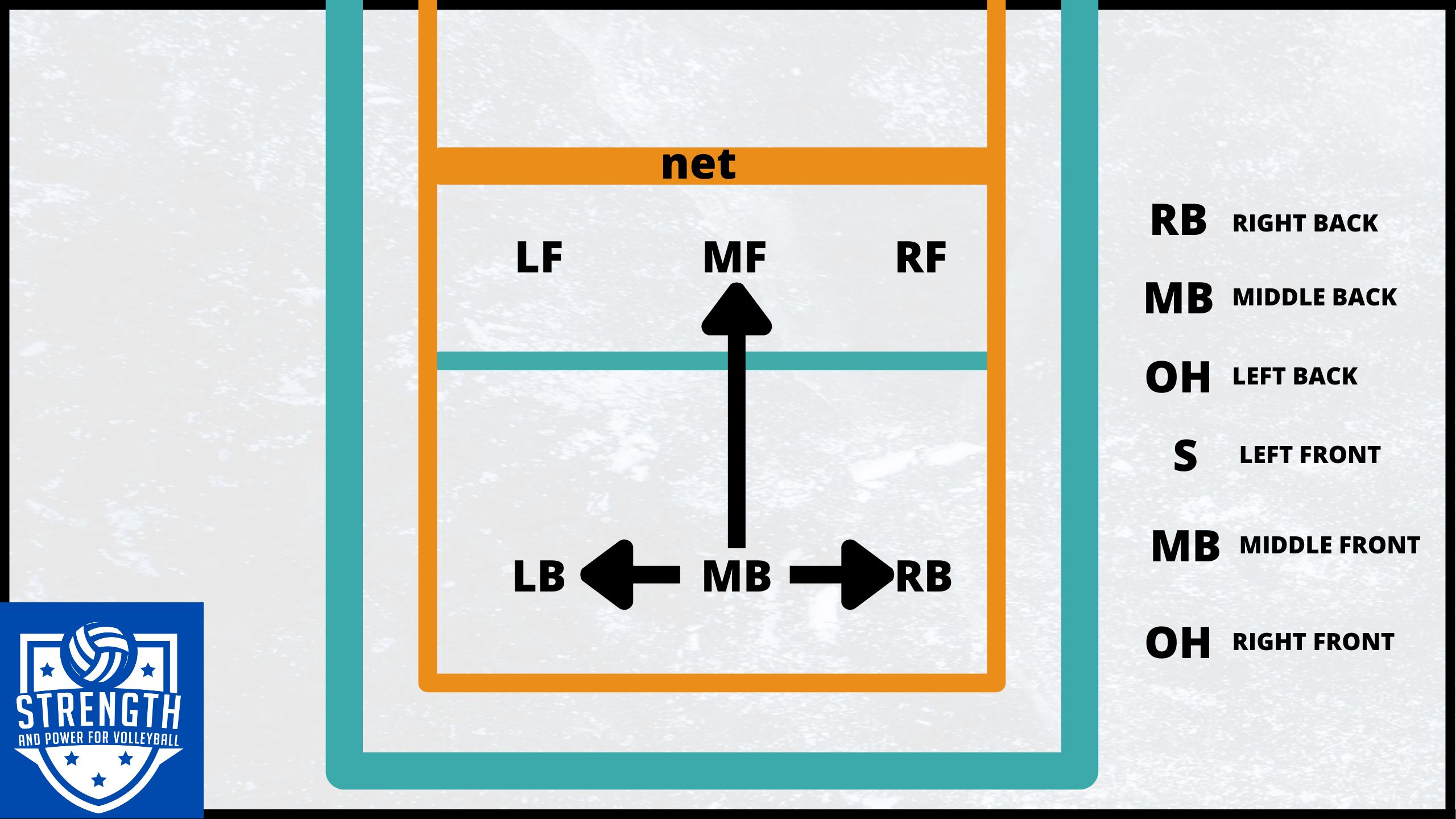
For the LB player (zone 5), you need to be concerned about LF, and MB.
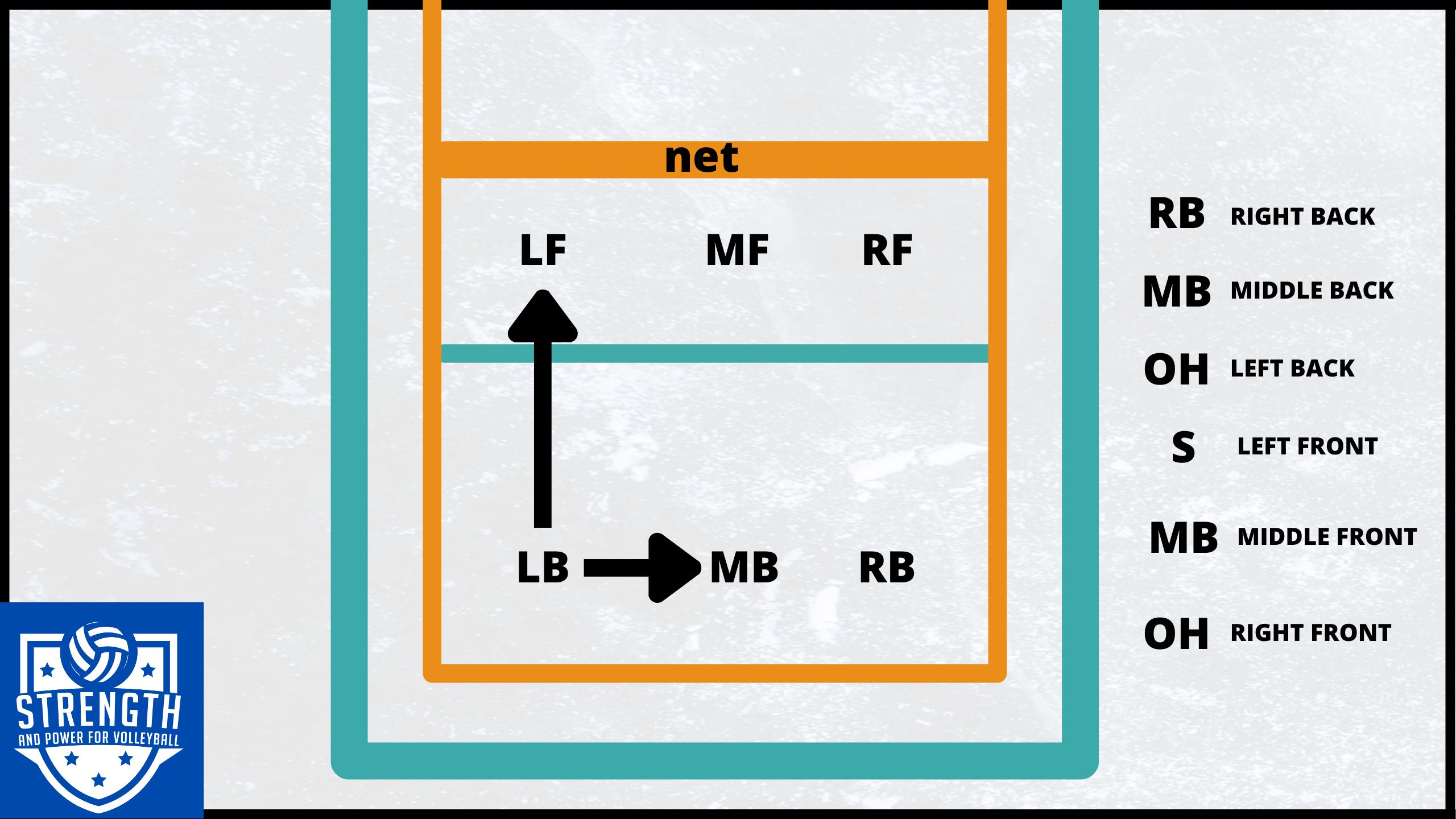
For the LF player (zone 4), you need to be concerned about LB, and MB.
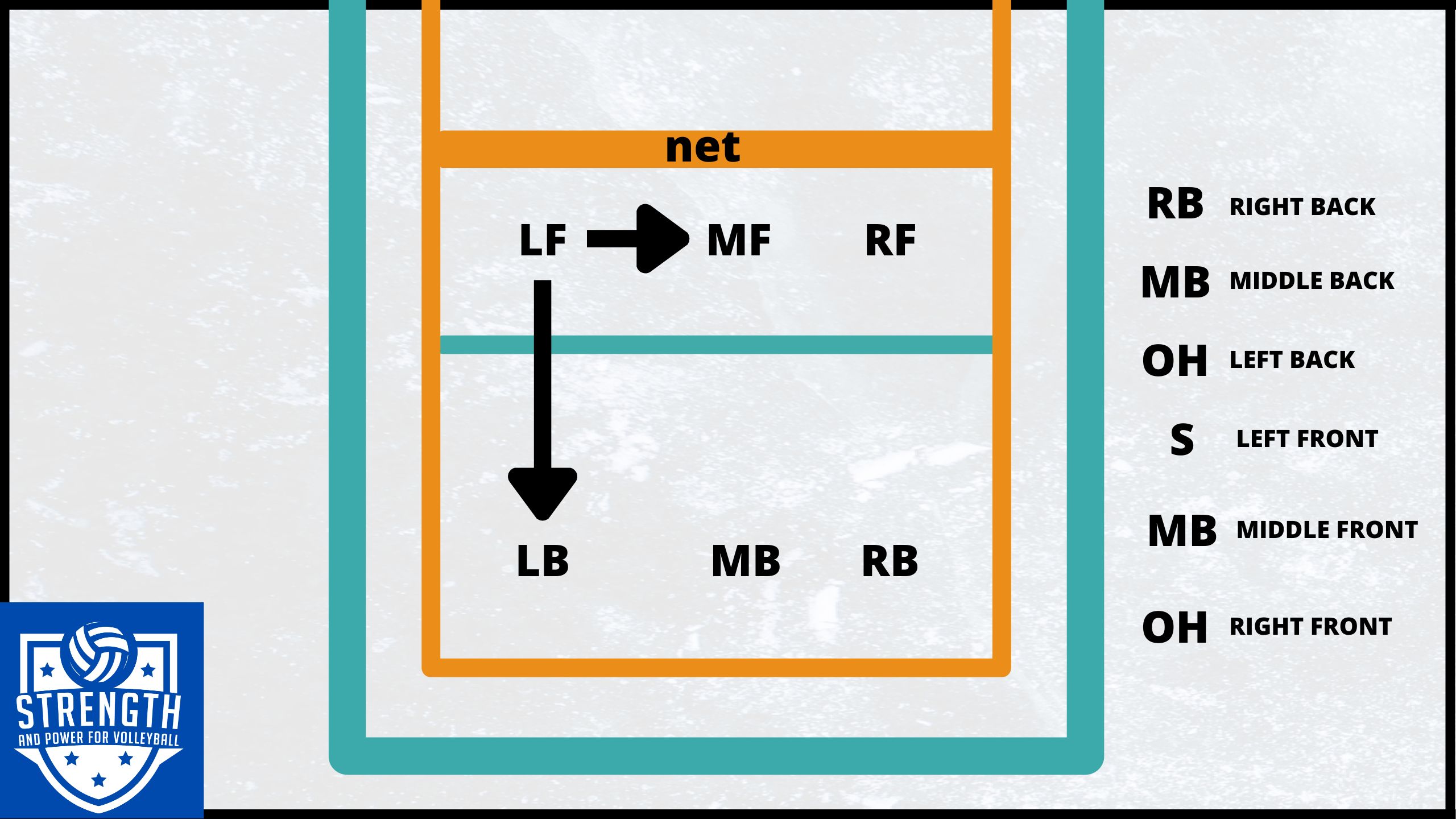
For the MF player (zone 3), you need to be concerned about LF, and RF.
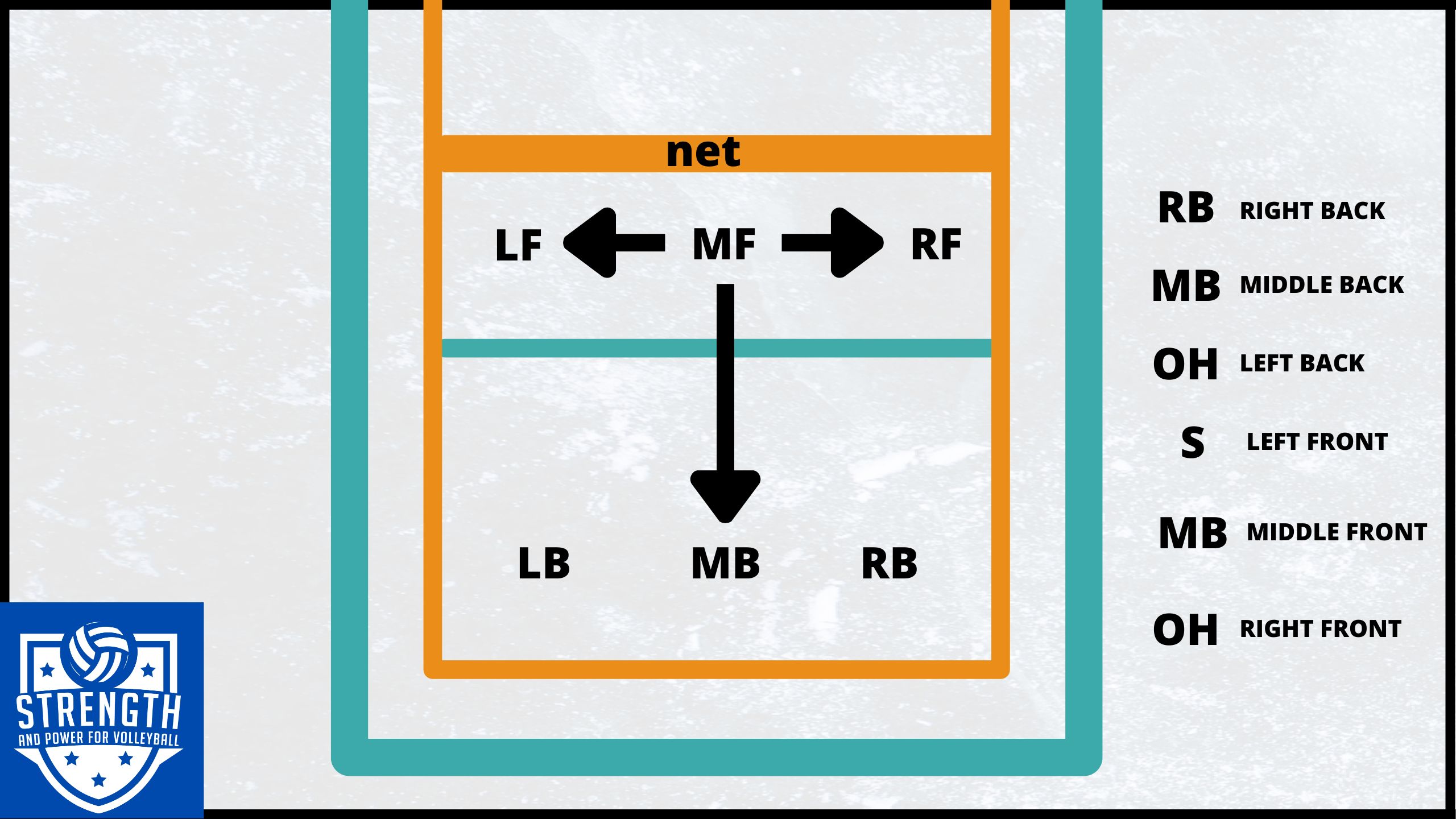
For the RF player (zone 2), you need to be concerned about MF and RB.
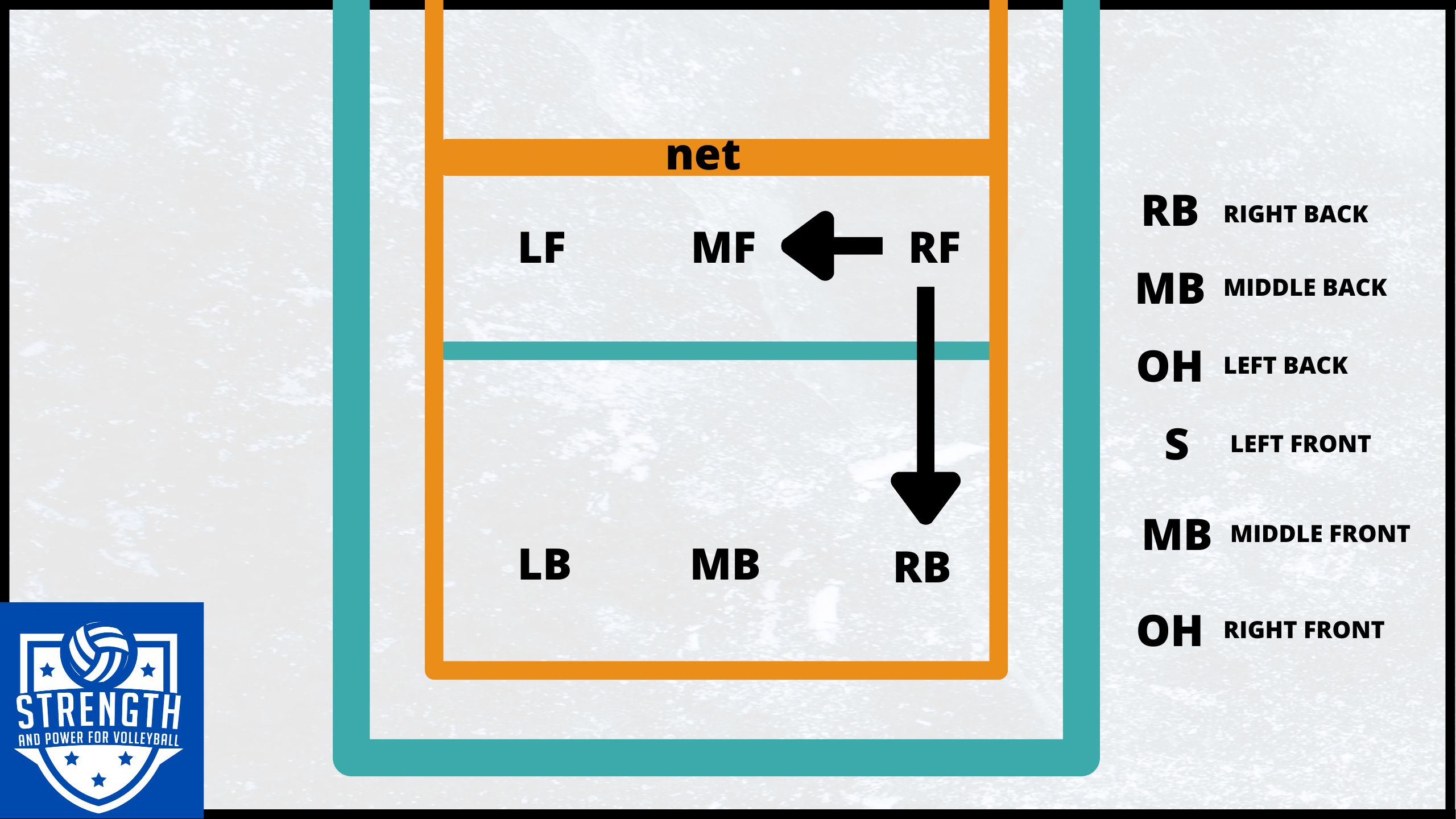
The Feet and Overlaps
When it comes to overlaps, where the feet are is what's important.
For example, in relation to the RB, the RF needs to have a foot touching the court closer to the centerline.
The RF player can legally straddle the feet of the RB player. However, the RB player can't legally straddle the feet of the RF player.
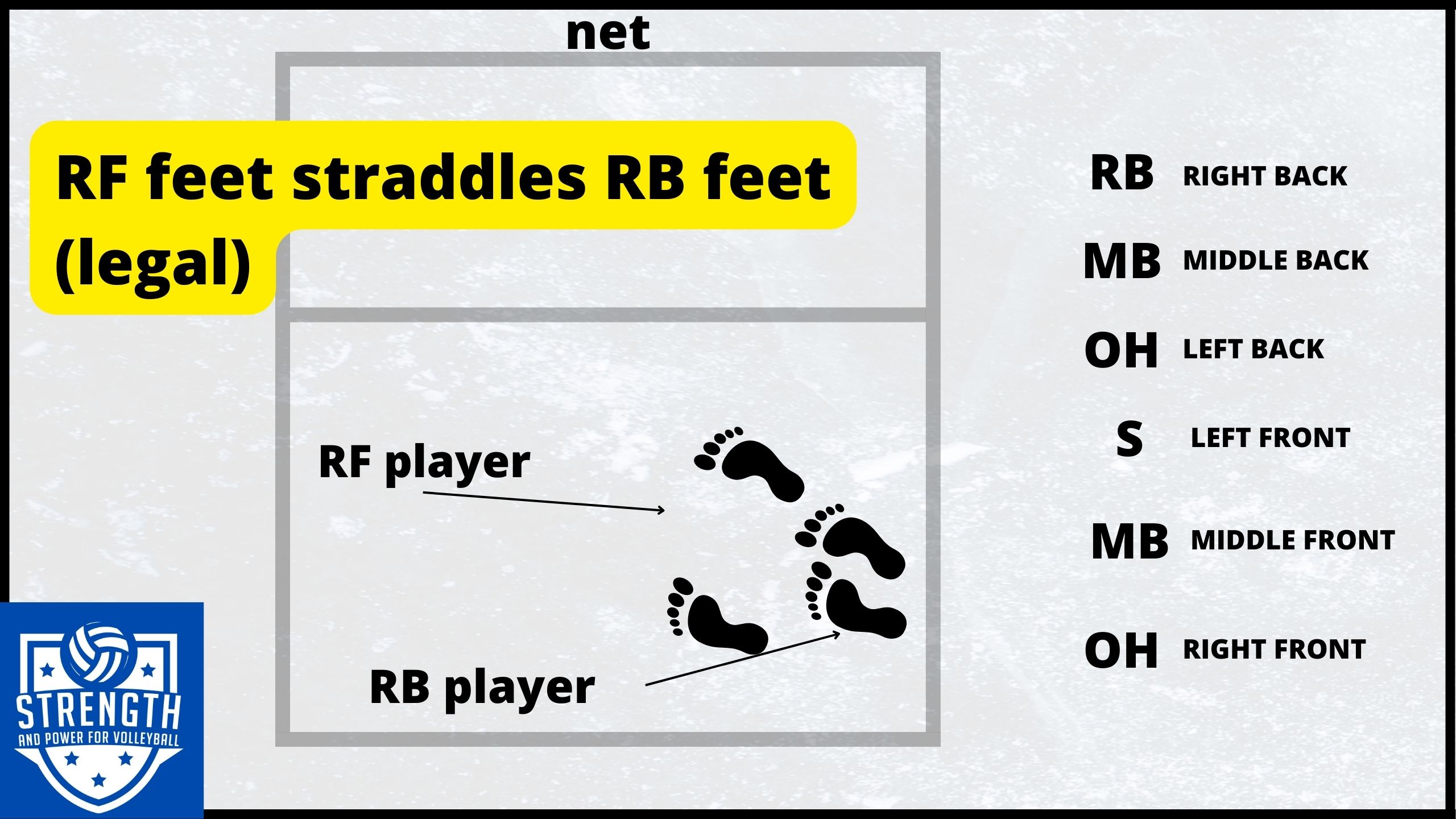
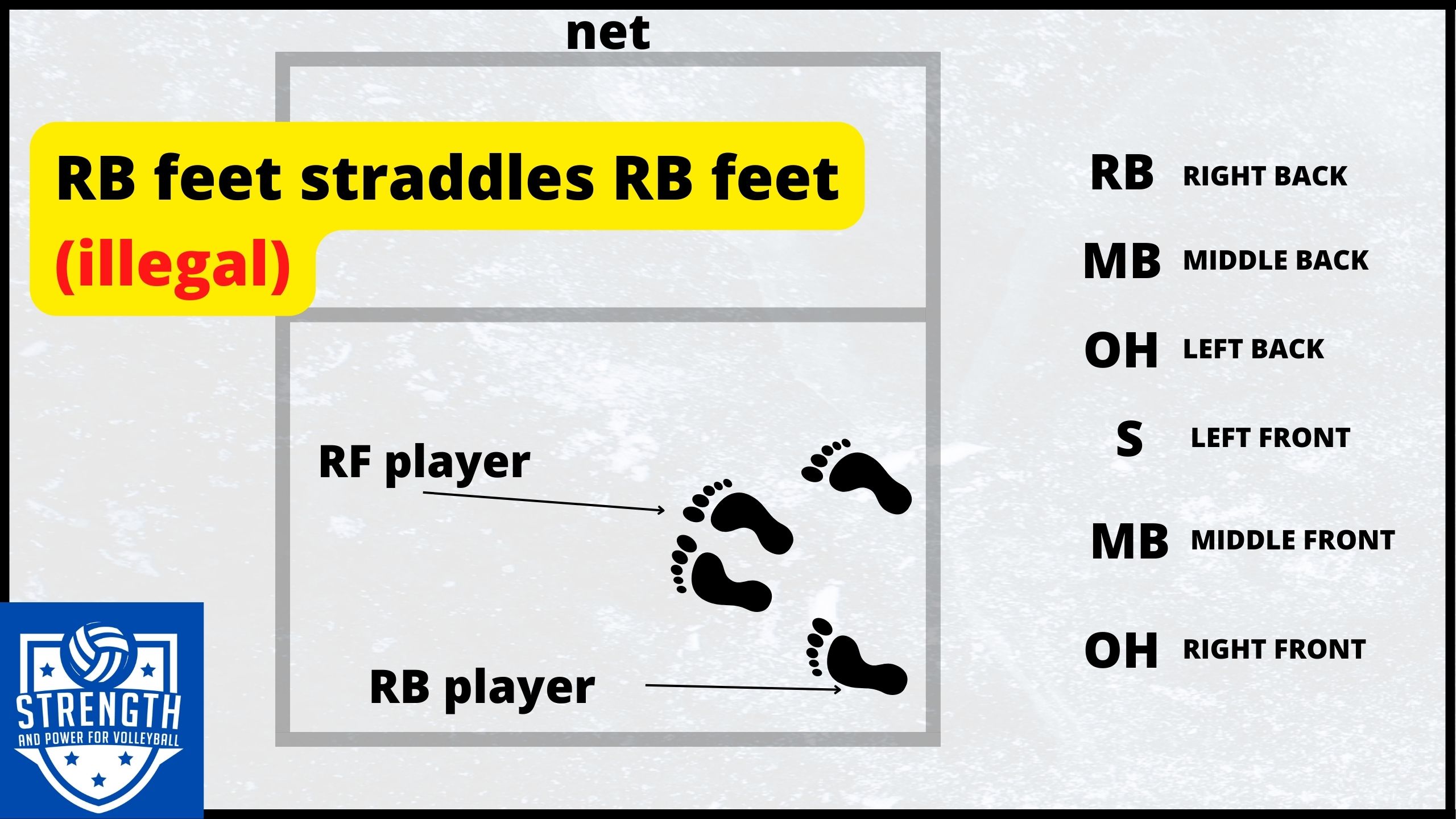
For the RB and MB overlapping, the RB must be closer to the right sideline.
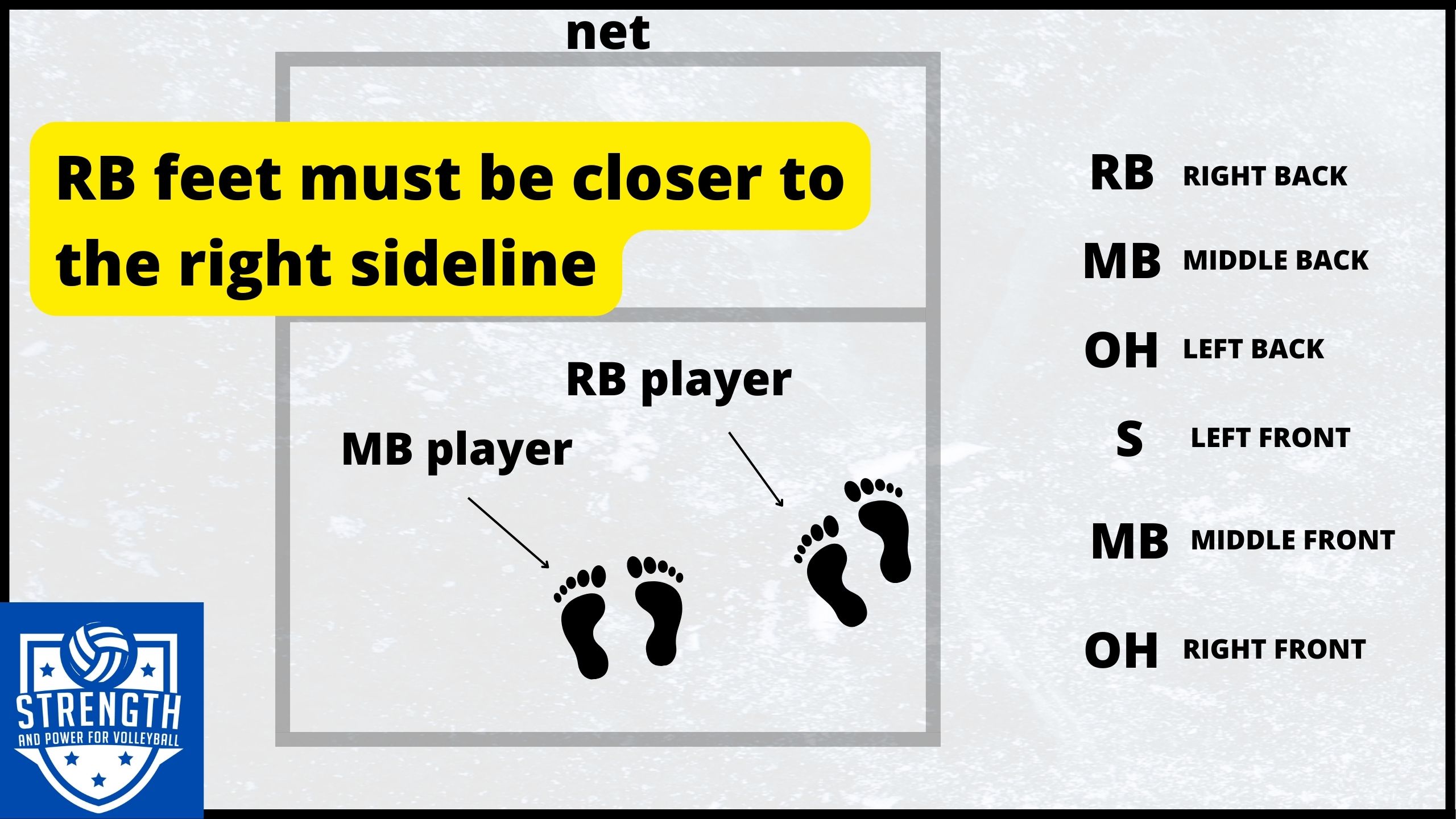
You Must Be Line Up Correctly the Moment the Ball is Contacted for Serve
This is how you need to be positioned on the court when the ball is contacted by the server.
After the ball is served, players can move anywhere they want on the court. For example, if the player in zone 2 wants to block middle, the player in zone 2 can switch with the player in zone 3 after the ball is served.
How to Avoid Being Called Out-of-Rotation
Since you now know understand the volleyball overlapping rules, you can prevent your teammates from being called for out-of-rotation.
Before each serve, quickly scan the court and recognize where your teammates are.
If you're RB, look to see who is MB. Is the player lined up MB the player you follow in the rotation? Is the RF the player following you? Is the player lined up LF your opposite? These are the questions to ask yourself.
Catch your teammates out of position before the referee blows the whistle for serve. Get the rotation fixed before it's too late!
If you ever get lost on the court, quickly scan the court to figure out where you need to be.
To figure out the rotation, most of the time all you need to know is what player you follow, what player follows you, and what player you are opposite.
Why Are There Volleyball Overlapping Rules?
You may be wondering why there are rules for overlapping in volleyball. The short answer is that if you let a team line up on the court however they want, then the team will have an advantage. By having overlapping rules, the teams are forced to create a strategy.
To win in volleyball, you need to win more rallies. You win rallies by attacking. To win, you need to become more successful at attacking the ball.
You get better attacks when the attacker is attacking from a position near the net. Also, it's easier to attack a ball that is set from near the net. Therefore, the ball needs to be passed to the net so the setter can set the attacker from near the net.
What does this have to do with overlaps?
A team lines up on the court in such a way that helps the setter be near the net to set. Also, the attackers are lined up in a position ready to attack. Also, most importantly, the passers in serve receive need to be lined up ready to receive the serve and pass the ball in such a way to make it easier for the setter to set.
Bottom line: The better the team is at understanding the rotation and understanding how to avoid overlaps, the better position the team will be to pass, set, and attack the opponent.
Be sure to read the pages and watch my videos on how to run a 6-2, 5-1, and 4-2 offense.
If you enjoyed these tips and would like to keep it close to you at any time, just save this pin to your Pinterest Volleyball Training Board.
